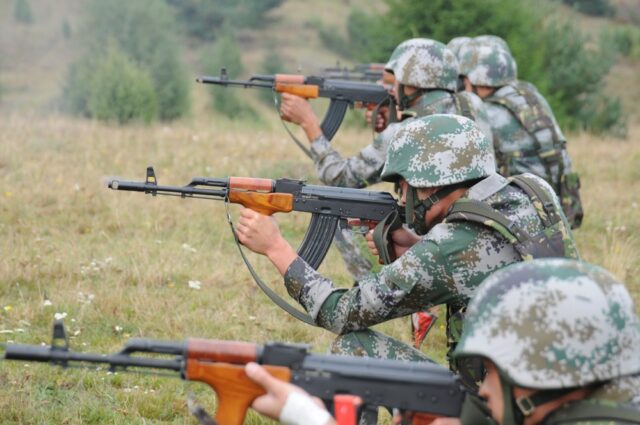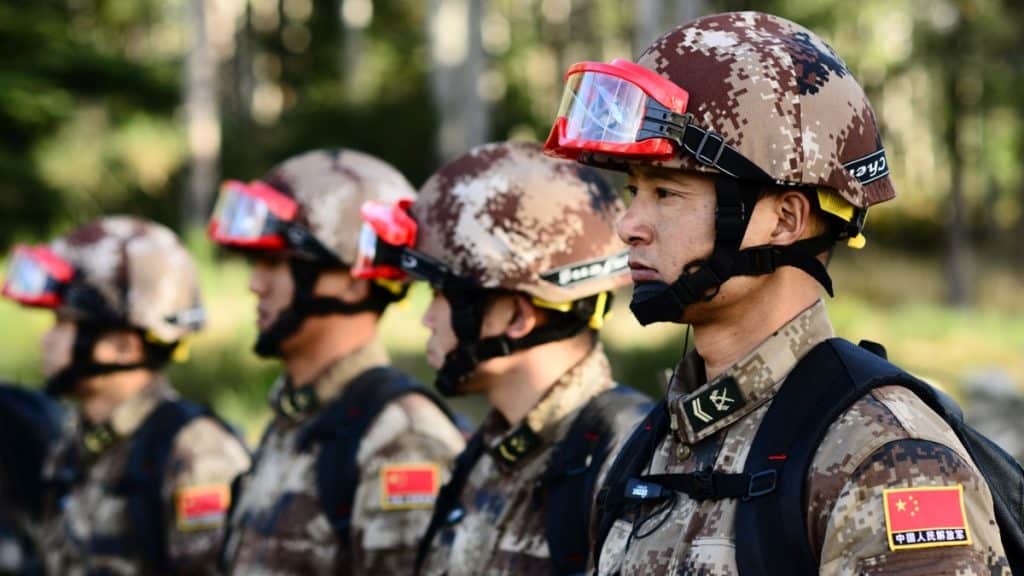Since the end of last year, China has been introducing a number of changes to the mobilization system – from calling up former soldiers and reservists, through conscripts, to the use of civilian resources. It is hard not to see this as the first practical application of the lessons from the Russo-Ukrainian war. What will be the practical effects of these changes, and even what is their full scope and nature, is still difficult to assess.
Mobilization in the Russian edition does not impress. This was due to both the inherent and acquired defects of the system, as well as political factors – Vladimir Putin is switching the country to martial mode by boiling the frog, the society is to gradually get used to the new conditions. In the context of modern warfare, however, the fundamental issue was fully revealed. The quality, understood as training and skills, of those mobilized counts as much as their numbers.
This was noticed in Taiwan, where at the end of last year a decision was made to extend the compulsory military service from four to twelve months and to reorganize the system of mobilization and reserves. The armed forces are to be divided into four divisions with clearly separate tasks.
The core of the army is to remain the volunteer and professional “main combat forces”, intended for basic missions related to ensuring security during peacetime and offensive operations during “W”. In turn, the “garrison forces”, composed of conscripts, are to be responsible for national defense, including the protection of key installations and facilities. They are to be supplemented by a reserve and civil defence, the tasks of which have not yet been defined.
Meanwhile, in China, national defense mobilization offices have been established since December last year. By early April, they had been established in the largest cities, such as Beijing, Shanghai and Wuhan, the provinces of Shandong, Fujian, Hubei, Sichuan, as well as in the autonomous regions of Tibet and Inner Mongolia. Mobilization offices are a brand new institution in the Chinese system and their status remains unclear.
Chinese soldiers with QBZ-95 carbines.
(mil.ru)
Formally, the National Defense Mobilization Commission, managed jointly by the Central Military Commission and the State Council, i.e. the government of the People’s Republic of China, is responsible for mobilization. In addition, the CEC also has the Department of National Defense Mobilization. This structure is intended to facilitate the coordination of activities between the military and civilian authorities, and the system itself is highly centralized.
According to local media reports, some of the offices are being built on the basis of Civil Air Defense Offices and are subordinated to the National Development and Reform Commission. To further confuse the matter, the offices are supposed to not only be responsible for the mobilization of conscripts and reservists in the event of a “W”, but also to recruit and manage very large paramilitary formations.
So what is the reform all about? The idea of creating national defense mobilization offices emerged last October during the 20th Congress of the Chinese Communist Party. An article published on January 31 by the People’s Liberation Army Daily called for a new model of the mobilization system. Another article in the same newspaper, this time from February 24, described the shift of responsibility for mobilization from local military structures to local authorities as a change of fundamental importance.
A more decentralized system is emerging, with some tasks being delegated to the local level. The Center retains full control over the decision on mobilization and its scope, but the implementation of the entire procedure is moved to lower levels. It is interesting to transfer responsibility for mobilization from military to civilian structures. Apparently, the military commands are to concentrate on conducting military operations, and the civil authorities are to provide the means to do so.
Chinese PLA infantry anti-tank exercise in Xinjiang. pic.twitter.com/PUldPjUmDl
— Warp United Models 🇺🇦 (@ModelsWarp) November 17, 2021
Such a division of roles becomes quite logical when we consider the concept of “civil-military fusion” that has been promoted for years. This is not only about the development and use of dual-use technologies or the use of modern technical solutions, such as 5G, by the armed forces. The purpose of the merger is to maximize the use of state resources in the event of a conflict. At least since 2012, work has been underway to include military needs in smart city projects. Another example is the military’s use of civilian logistics, from ferries to railroads and trucks.
The assignment of mobilization offices to paramilitary units should also come as no surprise. These formations have been undergoing a centralization process since 2017 and have been transferred from the Ministry of Public Security to the direct control of the Central Military Commission. This is to ensure better coordination with the armed forces.
It is also worth mentioning that the People’s Armed Police is responsible for protecting land and sea borders. Quite a few mobilization offices are being set up in border regions or near hotspots, just to mention Tibet, Inner Mongolia and Fujian across from Taiwan. Thus, it is safe to speculate that despite decentralization at the national level, Beijing wants to ensure the greatest possible centralization of the system for mobilizing military and paramilitary resources in areas of potential crises and conflicts.

Chinese soldiers during an exercise in Romania in 2009.
(Revista Fortelor Terestre, Creative Commons Attribution-Share Alike 3.0 Unported)
Thus, China shows potential opponents, led by the US and Taiwan, that they are actively preparing for a confrontation, probably hoping to force concessions in this way. Anyway, the new mobilization and conscription laws make it clear about “preparations for war” and the effective conscription of “high-quality” personnel. The creation of a “new type of military personnel” has been one of the basic goals for years. The soldiers are to be not only well-trained and professional, but also capable of “providing strong personal and intellectual support for the CCP’s goal of building a strong military in a new era and transforming the PLA into a world-class armed force.”
Although there is no shortage of people willing to serve in the military, the profile of candidates very often does not match the requirements of the armed forces. In short, China suffers from the same problem as Japan and the West – much-needed IT and high-tech specialists are not joining the military. After all, in the civilian sector, work is much better paid, safer, devoid of military rigor and the risk of serving in a remote garrison. Even the 2013 reform, which correlated conscription with the calendar of high schools and universities, did not help much.
The new regulations entering into force on May 1 this year will make it easier for the army to appoint the necessary specialists. This is especially true for students and graduates of universities. In a critical situation, the mobilization offices will even be able to directly hold universities responsible for conscription. This is another clear lesson learned from the Russian experience.
The changes will also cover the system of appointing reservists and former soldiers. In the event of mobilization, the latter are to be directed to the units in which they served or, if necessary, take similar positions in other units. In the case of reservists, the age to which they can be called up will be extended. This is to apply primarily to specialists and officers. Until now, the latter could be called up to the age of 55. Currently, the upper limit will be moved to 60 years.
See also: End of Eagle’s thirty years of service in Lakenheath
Sgt. 1st Class April Davis, Oregon Military Department Public Affairs

